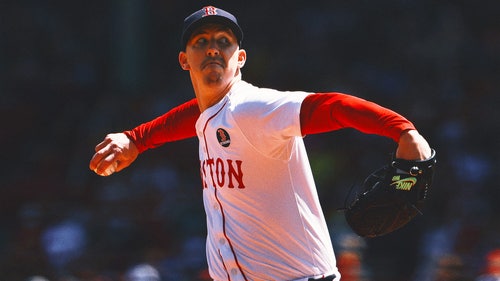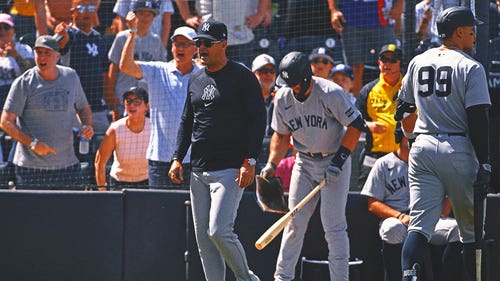
Astros most surprising strength? Their bullpen
The Houston Astros are 31-20 and on top of the AL West by four games. They’ve been winning in a signature way: by striking out a lot (the most in the league), hitting a lot of home runs (the most in the league), and recording a string of solid starts (11th-highest WAR among starting staffs). One way we didn’t expect the Astros to dominate this season, however: their bullpen. After two months, the Houston bullpen is ranked second among all major-league teams by strikeout rate and first by walk rate, and they also have the third-best ERA. Is this just a run of early-season success? Or, like the Royals, have the Astros built a relief corps that only a select few clubs have?
The bullpen was a major focus of the Astros' offseason plans before the start of the 2015 season, as they added Pat Neshek, Luke Gregerson, Will Harris, and Joe Thatcher to a group that finished dead last in bullpen ERA in 2014. Neshek and Gregerson were brought in as high-pressure help, with Gregerson installed immediately into the closer role. Gregerson has struggled (relatively speaking) to the tune of a 3.74 ERA, but he’s really been the only one in the bullpen who hasn’t been lights out, and he’s chosen great times to be bad, blowing only one save.
What’s been the key to the success for the Astros bullpen? First of all, they’re striking out an incredible rate of opposing batters. Houston relievers have struck out 28.4% of the hitters they’ve faced -- a figure which would be the most ever for a bullpen in history. They’ve also limited walks, only handing out free passes to 6.1% of opposing batters. That walk rate would be good for 25th-best in baseball history if the season ended today. Looking at these two figures, it’s not hard to see why the Houston bullpen has been great: success usually follows pitchers who strike out a high percentage of batters while keeping walks to an absolute minimum.
This mostly unexpected domination out of the Astros bullpen has come from a few unlikely places. First, there’s newcomer Will Harris, who's struck out 29 batters in 24 innings of work while posting an elite ground-ball rate (58.3%). As the most-used pitcher out of the Houston pen, his two pitch, hard cutter/curveball combination has been very effective in two parts of the strike zone: 10 out of his 13 strikeouts with the cutter have been in the upper half of the strike zone and above, while all but one of his 11 strikeouts with his curveball have been in the lower half of the zone and below. This is what success in changing eye levels looks like:
Josh Fields has been another revelation in late-inning relief. A former first-round pick in the 2008 draft, it’s taken a little longer than expected for Fields to reach his full potential. After a 2014 season that hinted at what might be in store, he seems like he’s finally reached it: his 21 strikeouts in 13 innings are fueled by a mid- to upper-90s fastball that generates a borderline absurd percentage of whiffs (his 36% whiff rate on his fastball compares to about a 15% league average rate). Take a look at it:
Following the Royals-esque plan of a high-strikeout, low-walk bullpen has made the Astros relief corps much less prone to the variations in luck that can easily ruin the performance of a group of relievers. Simply by striking out such a high rate of batters, the Astros pitchers don’t have to rely on their defense to turn batted balls into outs, making them more immune to rallies than other bullpens.
That’s probably one of the reasons why their strand rate (the percentage of batters they leave on base) is higher than other teams, at 81%. Experience tells us that rate might regress to the league average (between 70-72% in a given season) as time goes on, but high-strikeout pitchers have shown to be able to sustain higher than average rates of leaving runners on base. It should be noted that Houston relievers are also sporting a lower than sustainable batting average on balls in play (.230 compared to a .289 league average), meaning some of the batted balls against them are going to start falling for hits, which should negatively impact their performance. Just how much that regresses will impact their future success.
To look deeper into that question of whether this sort of performance can continue, let’s look at an interactive graphic comparing the FIP (Fielding Independent Pitching) mark of each team’s bullpen compared with their ERA. Amongst other things, this will give us an idea of how lucky each bullpen has been compared to their actual in-game performance, and whether their ERA might be due for a correction. Longer lines between two points mean a greater difference between a team’s ERA and FIP, telling us that they have either been lucky (lower ERA than FIP) or unlucky (lower FIP than ERA). Hover over a dot to see the exact figure for a team:
Near the top, we can see the Astros are not only in the top three in ERA, but also among the top three in FIP; this tells us that it hasn't been their defense or mainly luck that has been driving their success -- they actually have been pitching very well. Will that continue? It's hard to say after only two months of baseball, but continuing to strike out over a batter an inning while having the lowest walk rate in the league is a great foundation for success.
We projected the Astros to finish around the middle of the league (15th) in our preseason rankings for bullpens. Here, at the beginning of June, they’re showing us they might be way better than that. If their success so far was built on luck, we would be far more skeptical of this dominance continuing; as it stands, we can see they've had two months of elite bullpen work built on solid numbers. We know a lot of these guys have the raw stuff for success, and they're showing that they might be putting it together in 2015. If this Astros bullpen continues pitching like this, that can only be really good news for Houston’s success in the AL West.







